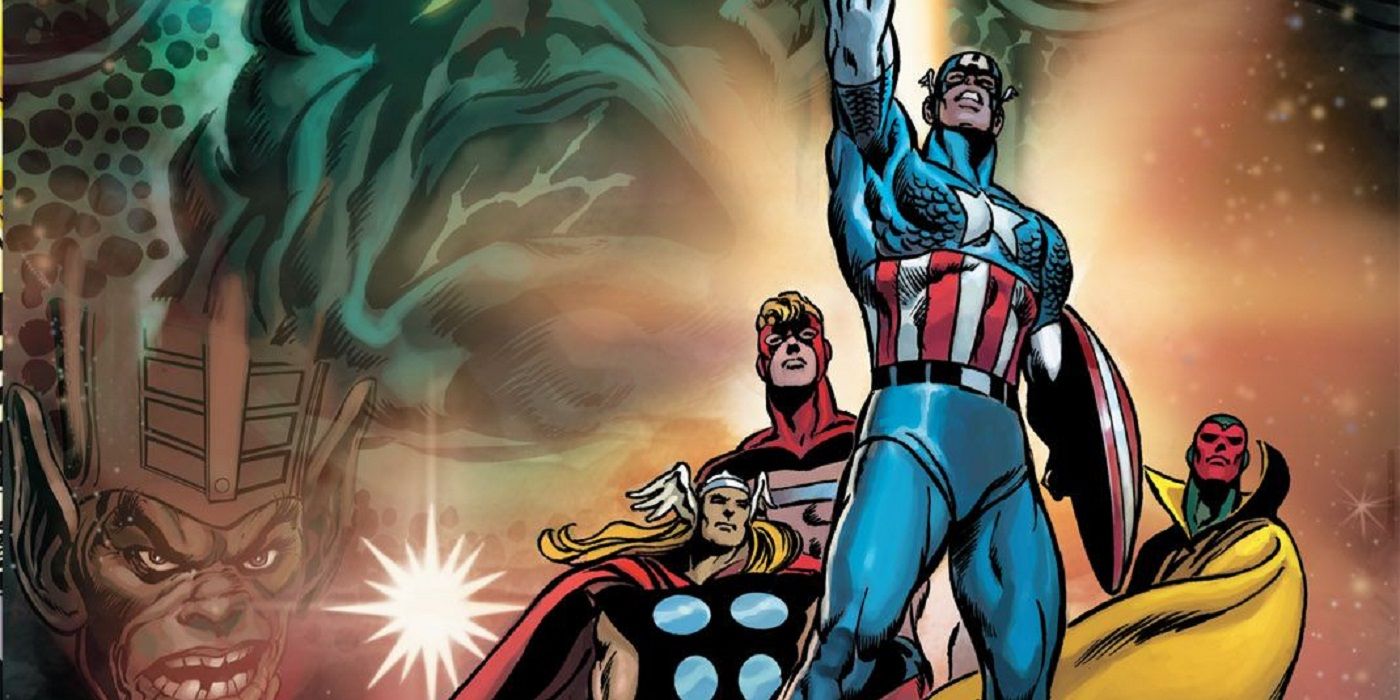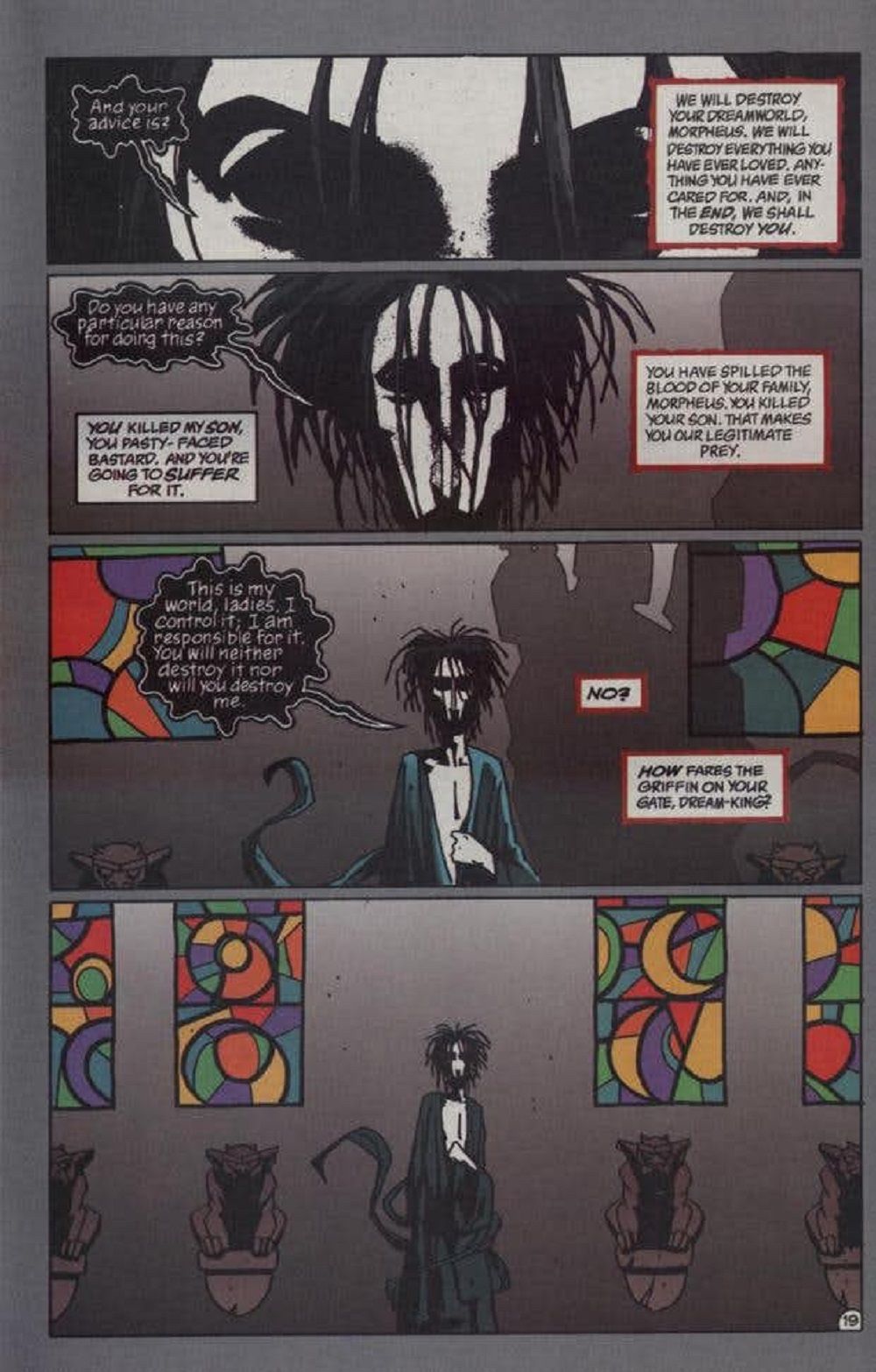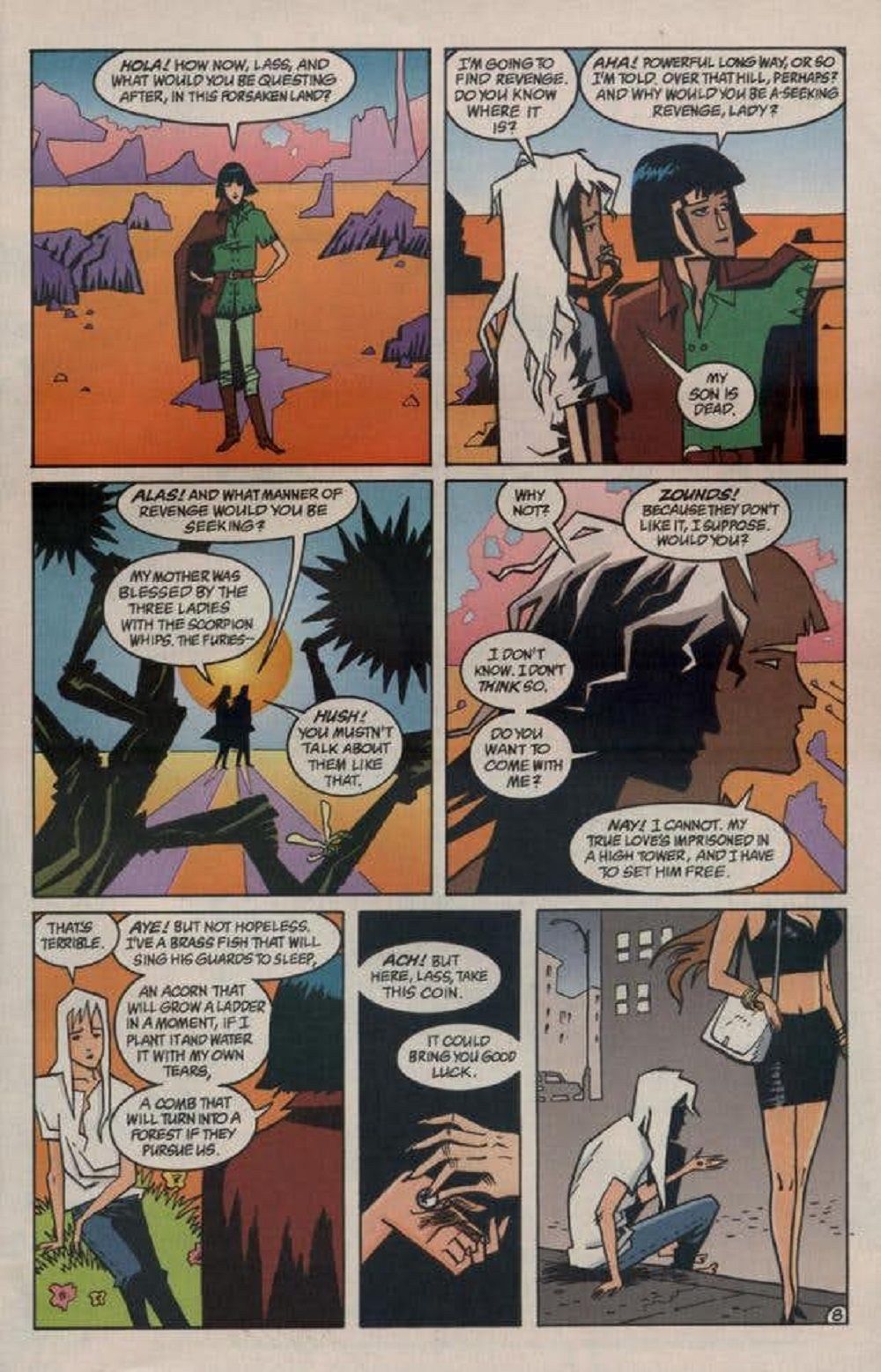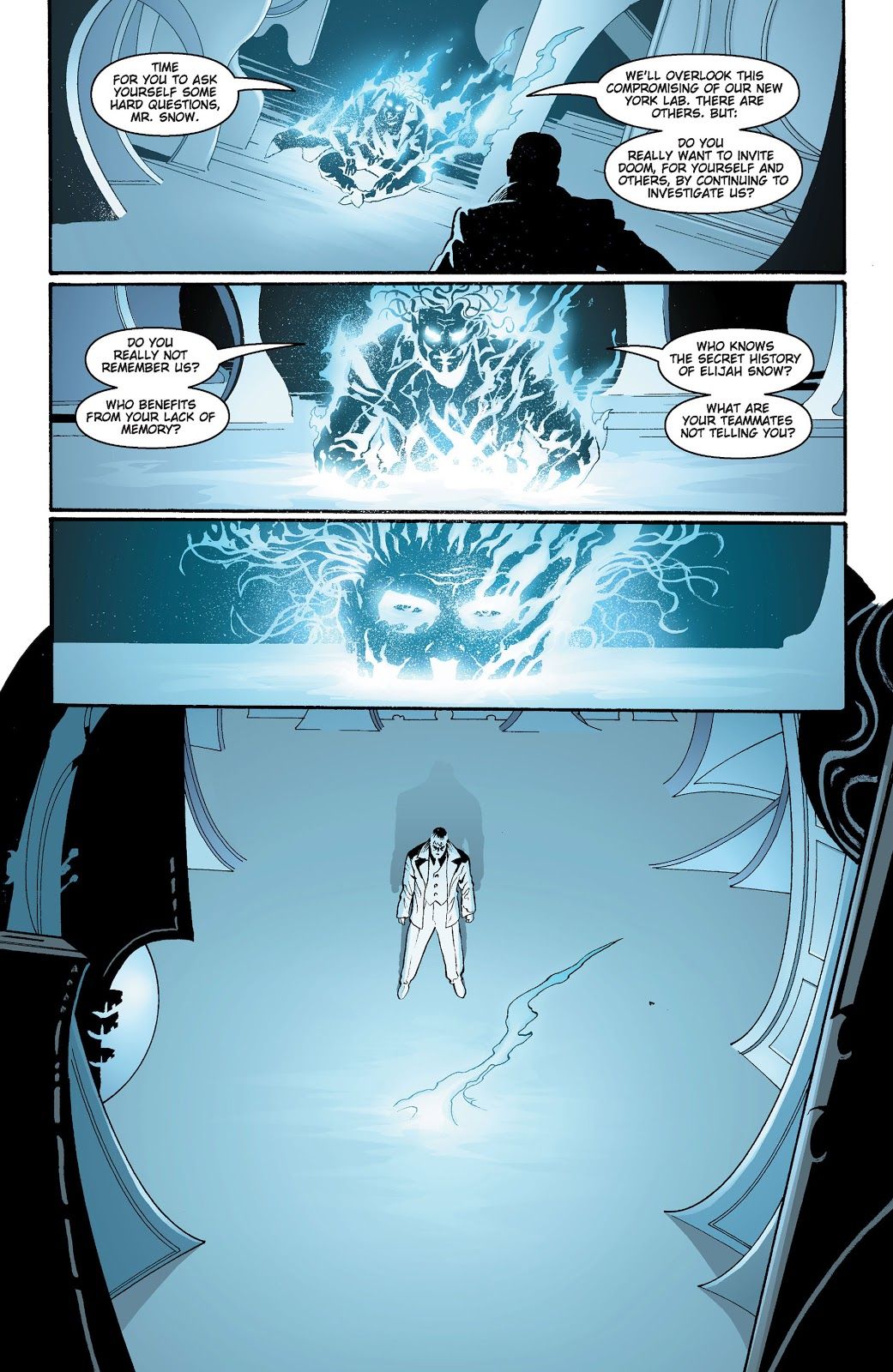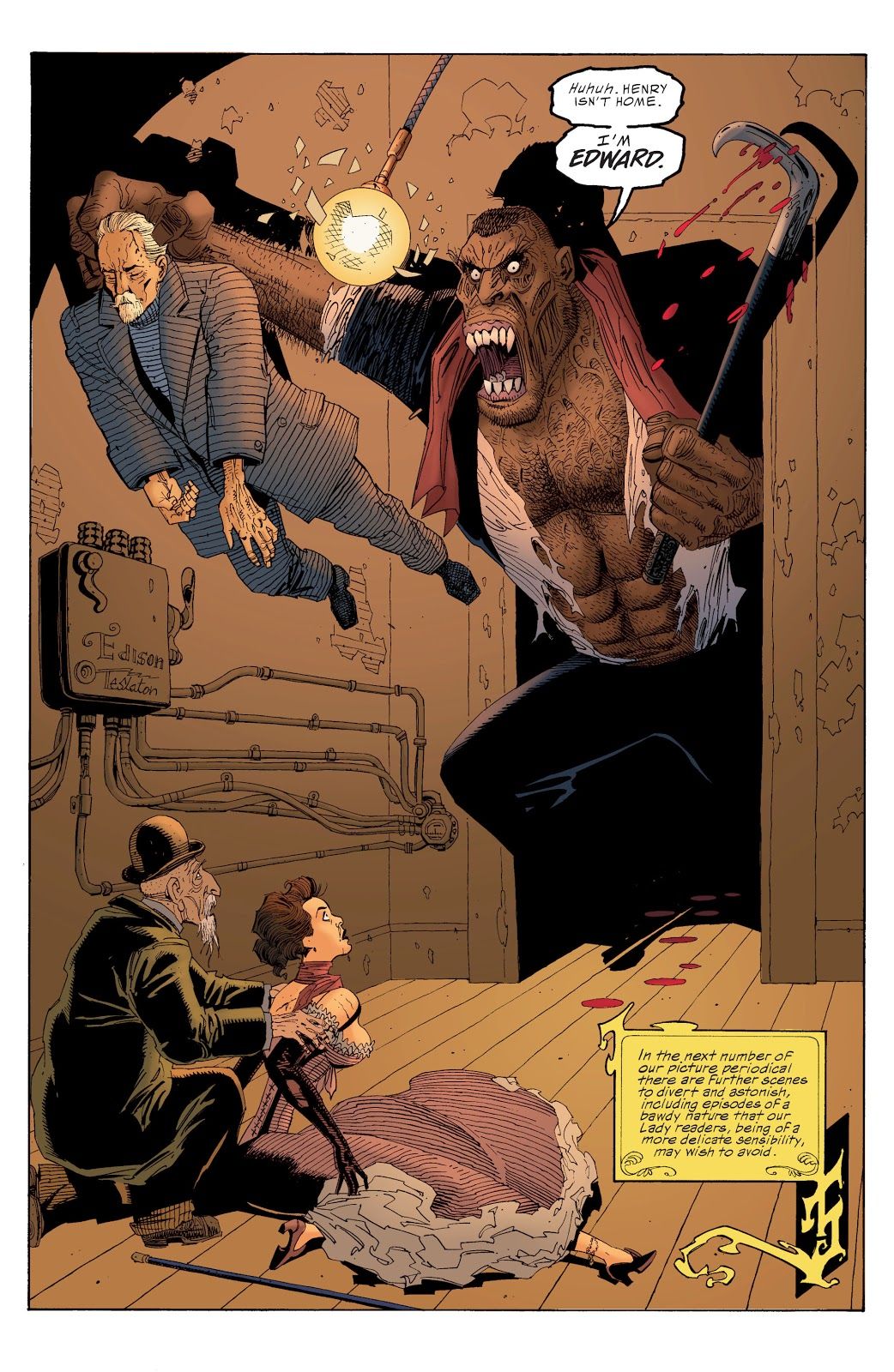Today, we continue our countdown of your picks for the greatest comic book storylines of all-time with #56-53.
You voted (over 1,000 ballots cast and a little bit more than the last time we did this countdown) and you all sent in ballots ranking your favorite storylines from #1 (10 points) to #10 (1 point). I added up all of the points and here we are!
56. "The Kindly Ones" by Neil Gaiman, Marc Hempel, Richard Case, D'Israeli, Ted Kristiansen, Glyn Dillon, Dean Ormston and Charles Vess (Sandman #57-69) – 193 points (2 first place vote)
The Kindly Ones is the climax to Neil Gaiman’s original Sandman series and as such it draws upon so many different earlier stories of the series, primarily the idea that Morpheus, over the course of the series, has made ALL sorts of different enemies. And now, all of those debts are going to have to be paid with Morpheus’s life.
A fascinating aspect of the story is that the whole time Morpheus understands what is the ultimate end to his story, yet he cannot turn away from his responsibilities to avoid his untimely end.
Meanwhile, Lyta Hall (the former superheroine known as The Fury) believes that Morpheus is responsible for the death of her son, Daniel. She is in a total daze, as demonstrated in this page from early in the story…
Lyta is a perfect patsy, of sorts, to arrange Morpheus’ ultimate fate and, just like all great tragedies, she understands too late that her son is actually alive.
Meanwhile, we get to check in on pretty much every major character from the series, from Lucifer to Thessaily the Witch, as they all play a role in the story. It’s a truly wonderful climax, bringing in all of the various plots and awesome characters that Gaiman had created during the series’ run. All of the favorites check in at one point or another.
55. "Who is the Fourth Man?" by Warren Ellis and John Cassaday (Planetary #1-12) - 194 points (1 first place vote)
Planetary is about a group of (this is what is on the cover of the first issue) “archaeologists of the impossible.”
Essentially, Planetary explores unexplained phenomena and, if there is any practical use to mankind out of said phenomena, they extract it.
The Planetary team consists of the super-strong Jakita Wagner, the “plugged-in” Drummer and the century-old Elijah Snow. The team is funded by the mysterious “Fourth Man.”
The first “season” of Planetary ends with the discovery of just WHO the Fourth Man is and how that revelation changes the game plan of the title for the rest of the series.
Each issue of Planetary explores the concept of “what if all popular culture characters existed, in some form or another, in the Wildstorm Universe?”
So every time out, Ellis and Cassaday examine a different notable pop culture figure, almost always with analogues for the characters who are not yet in the public domain (Doc Brass, for instance, instead of Doc Savage).
As the series goes by, we learn that there is a group out there with an entirely different focus than the Planetary folks – this group, known as The Four (based on the Fantastic Four, naturally), wants all of the “super-science” of the world to themselves – they don’t want the rest of the world to have any access to these wonders.
That, and the identity of the Fourth Man, are the key points of plot development over the first 12 issues of Planetary.
Here we see Elijah Snow in battle with a member of The Four as he taunts Snow about his forgotten past…
Cassaday, for his part, draws in a slightly different style for practically every issue, so as to perfectly meet the needs of the pop culture character being referenced in that issue. It’s quite brilliant work on his part, as is the whole series by Ellis. These first twelve issues were impeccably planned out by Ellis, all rising to the striking revelation of the Fourth Man in the final issue of the “season,” as the Fourth Man makes his presence known in a remarkable fashion.
54. “Kree/Skrull War” by Roy Thomas, Neal Adams, Sal Buscema and John Buscema (Avengers #89-97) – 196 points
The most striking aspect of the Kree/Skrull War is just how many different ideas that writer Roy Thomas manages to fit into this one story. So many different things take place that there is never any time to relax, for as soon as you think Thomas is going one direction – he goes another.
The main gist of the story is that the people of Earth, primarily the Avengers, get caught up in a long-time feud between the Kree and the Skrulls.
This shows up on Earth with the shape-changing Skrulls causing trouble on Earth that is a commentary on McCarthyism (shape-changing does wonders for the whole “anyone could be a commie spy!” attitude of McCarthyism). A Senator (actually a Skrull in disguise) causes an “anti-alien” rally in the public, which is bad news for the superhero Captain Marvel, who happens to be a Kree himself! The whole “Communists among us” angle is even played up on a memorable cover during the storyline – “The only good alien is a dead alien!” – taken directly from anti-communism rhetoric.
This storyline is also a major one in the development of the Vision, particularly his relationship with the Scarlet Witch. Speaking of those “out of nowhere” ideas – early in the story, Thomas and artist Neal Adams do a stellar take-off on the Fantastic Voyage by having Ant-Man shrink down and revive a comatose Vision.
Later on, Vision gets to opine about the foolishness of McCarthyism, and it is at this time that he begins to draw closer to his teammate, the Scarlet Witch, who is both a gypsy AND a mutant, so she knows about prejudice!
Thomas has the story leap from location to location, and eventually throws in a number of far-flung space adventures – it’s really a thrill-a-minute.
The artwork by the Buscema brothers and Neal Adams is about as good as you could have possibly hoped for in an early 1970s Marvel comic! Especially Adams’ thrilling issues.
Really, the ideas that Thomas came up with for the Kree/Skrull War would be re-visited time and time again over the next few decades, all the way through to today, making it a truly landmark storyline!
53. “The League of Extraordinary Gentlemen, Volume 1" by Alan Moore and Kevin O’Neill (League of Extraordinary Gentlemen #1-6) – 199 points (3 first place votes)
Alan Moore’s America’s Best Comics line tended towards “high concepts,” you know, really cool ideas that you can get across in a sentence.
“Cops in a city where everyone is a superhero.”
“A living story becomes a superhero.”
“Classic literary characters from the 19th Century form a team of heroes.”
That last one, of course, is what The League of Extraordinary Gentlemen is about. A number of classic British literature characters join together on a team, notably Allan Quatermain (from the novel King Solomon’s Mines), Mina Harker (from the novel Dracula), Captain Nemo (from the novel Twenty Thousand Leagues Under the Sea), Griffin (from the novel The Invisible Man) and Dr. Jekyl/Mr. Hyde (from the novella The Strange Case of Dr. Jekyll and Mr. Hyde, Dr. Jekyll and Mr. Hyde).
While that’s a great high concept, there are plenty of great high concepts that can be ruined by bad writing (see, for instance, the movie based on League of Extraordinary Gentlemen), and Moore manages to evade any pratfalls by taking the concept of a book actually set in 1896 very serious, and with a brilliant design artist such as Kevin O’Neill by his side, the look and feel of the book is very much of that time.
The series tells a fairly straightforward villain story (with perhaps a bit of a mysterious villain), but it’s HOW Moore and O’Neill tell is that’s the best part of this tale, as they cleverly incorporate numerous classic literary figures into one cohesive universe – it’s Wold Newton near its best.
Like how Dr. Hyde is tied in with Inspector Dupin of Poe’s “The Murders in the Rue Morgue” (SPOILER! In the original story, the unbelievable murders were done by an orangutan - here, they're done by Mister Hyde)…
Or how the Invisible Man is introduced by sneaking into a girl’s school and sexually assaulting Pollyanna (from the novel Pollyana) before he is captured. And so on and so forth. For any fan of 19th century and early 20th century literature (particularly English literature), the book is an absolute delight, if often a TWISTED delight.

